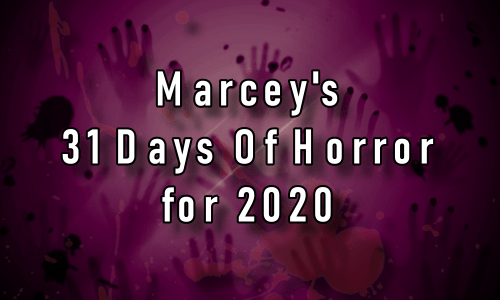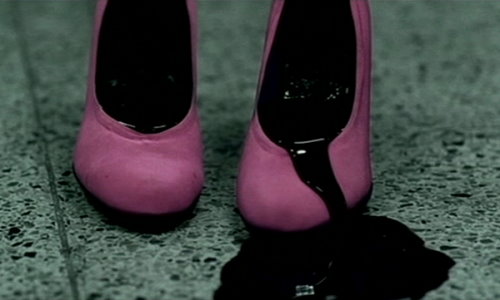
Mini Review Day 15: The Red Shoes (2005)

South Korea has a very rich and diverse horror film industry, with films such as The Host (2006), A Tale Of Two Sisters (2003), Train To Busan (2016) and Thirst (2009) being just a few the notable ones. The filmmakers are always giving us something different and tackling different sub-genres in their own unique way, much like The Red Shoes (2005) does. Taking inspiration and adapting the classic fairy tale from Hans Christian Andersen of the same name, writer/director Yong-gyun Kim has made a chilling film that has been updated for a more modern take.
Young mother Sun-jae (Hye-su Kim) is struggling with her day to day life, with husband Sung-joon (Lee Eol) showing her no interest and their daughter Tae-su (Park Yeon-ah) being distant from her. When Sun-jae finds out Sung-joon has been unfaithful she leaves with their daughter and begins to rebuild her life, setting up a new eye clinic with the help of interior designer In-cheol (Kim Sung-soo), with whom she becomes romantically involved with. Things don’t seem to be going well for Sun-jae as the appearance of a pair of pink shoes she finds on the subway soon bring out greed and vanity within herself and those who come in contact with the shoes including her daughter.
The Red Shoes is a very loose adaptation of the Hans Christian Andersen story, with parts of his story swirling through the film, with his themes of vanity and greed being very much on display here. The film differs from the original story with these characters, adding a very surreal supernatural element and exploring the themes more in-depth and adding in subtext around obsession, envy and betrayal. It is an interesting take, and there were some very bold creative choices that enhance the experience, with the washed out look of every scene but the shoes themselves being bright and vibrant. At times the story can get convoluted as it progresses and some of the pacing doesn’t quite work as well as it perhaps should have.
The film is held together by it’s visual style, hypnotic score and superb performances by its main leads with Hye-su Kim carrying the film from start to finish and unleashing a captivating performance. The rest of the cast are great here as well, with Park Yeon-ah bringing in all the right notes for Tae-su, whether it be annoying child or absolutely creepy child, she was memorable. The Red Shoes is a different take on the fairy tale, unsettling at times and tying itself together in a messy bow by the end.
Rating:

Mini Review Day 16: The House of the Laughing Windows (1976)

The Italian style of giallo films started to appear in the 60s and gained popularity, it was booming for a good 30 years before slowing down. Many notable filmmakers came from this period in Italian cinema, the likes of Dario Argento, Mario Bava and Lucio Fulci worked a lot during this time and their influence has been felt since, inspiring so many with their work. The House of the Laughing Windows (1976) definitely took inspiration from what came before it, however it certainly is its own unique film with credit to writer/director Pupi Avati on what he achieved with this stand out giallo.
The film sees young man Stefano (Lino Capolicchio) taking a job in an isolated village to restore a mural (fresco) of the martyring of St. Sebastian in the towns Church, the mural was done by a local artist called Legnani who residents say was a madman and they called him ‘The Painter of Agony’. Stefano becomes obsessed with finding out about this mysterious artist, who has long since been assumed dead, the stories and paintings left behind tell a very dreadful story, one that he can’t help but investigate. There is something strange about this town and the legend of Legnani, that mysterious things start to happen around Stefano every time he gets closer to the truth.
At the heart of the giallo film is a central mystery, and that mystery needs to be something to keep the audience invested or the entire film just falls apart. The strange town, the paintings and the stories of this painter ‘The Painter of Agony’ are intriguing enough to keep investment and the pacing stays steady throughout. While there are clues and red herrings, clever viewers will be able to pick up on what is going on and piece things together, but the final few scenes are so shocking it really brings the whole film together.
The House of the Laughing Windows is a clever film, with some incredible visuals and colour as you’d expect from a giallo, with some fine performances especially from lead Lino Capolicchio whose character of Stefano is likeable for the most part. This stands out as one of the more memorable films from the 70s era of giallo, with an ending that not only shocks but can make the viewer wonder how they missed the clues, highly recommended for fans of the genre.
Rating:

Reviews written by Marcella Papandrea